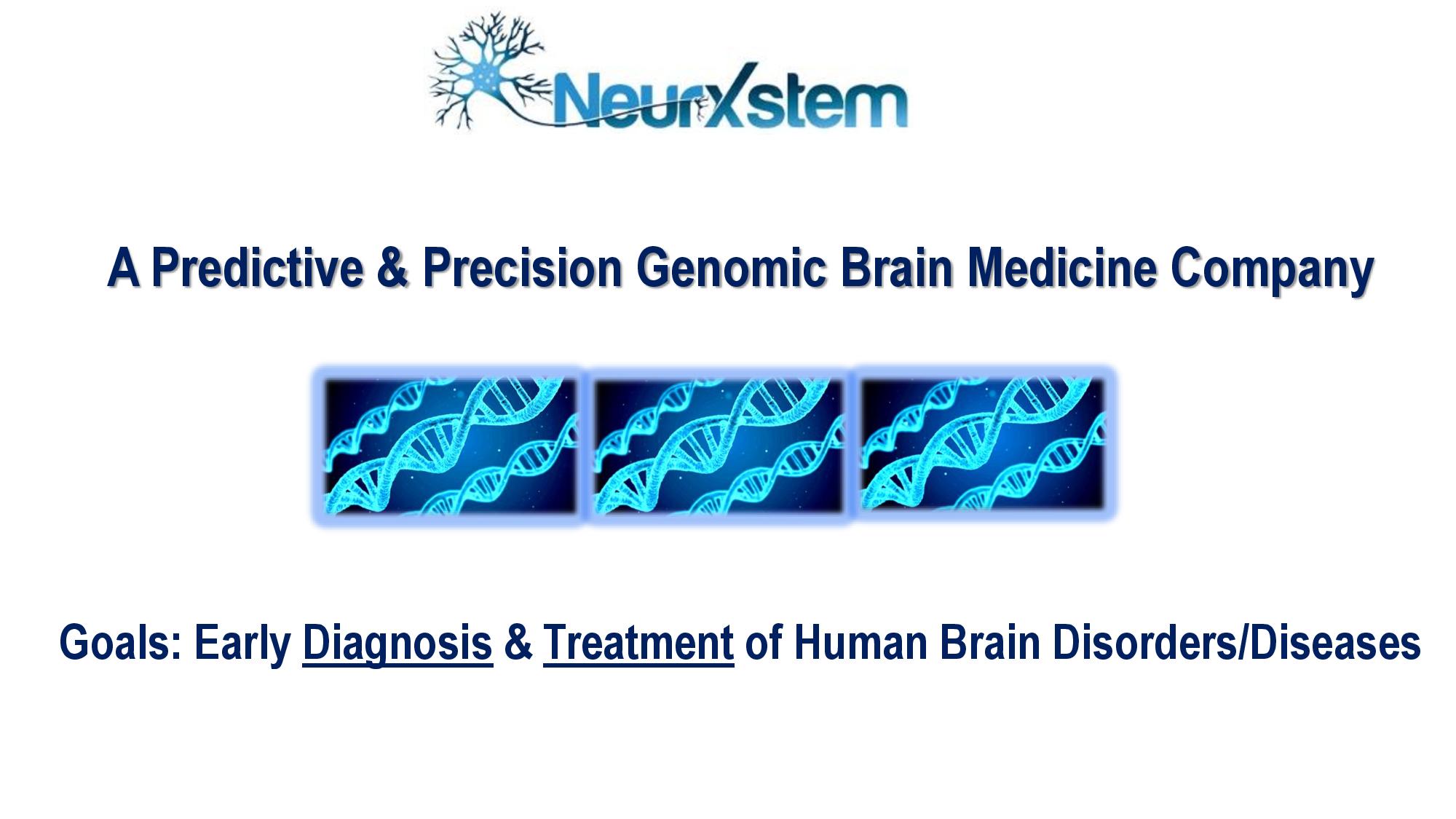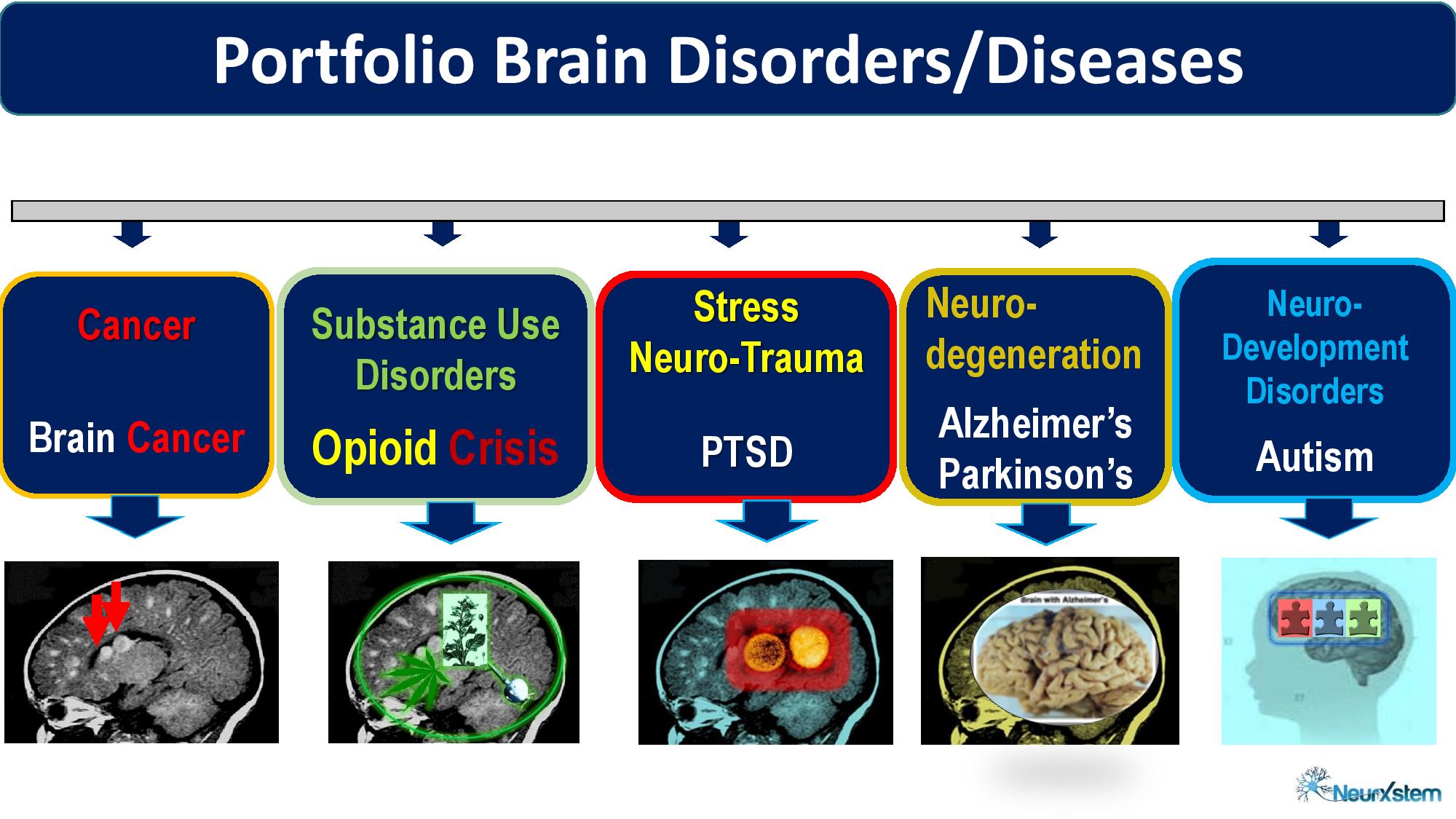Using human induced pluripotent stem cells (IPSCs), derived from skin cells of individuals, Neurxstem produces neural organoids that mimic CNS development at five weeks in development in vivo. These neural organoid mimic have all the major structures of the brain. This versatility in the laboratory helps investigators create models of human brain diseases and test new treatments.


Some of our technology applications include:
Disease biology
Our neural organoids can be engineered with genetic predispositions for a wide range of diseases. This way, researchers can explore questions about brain disorders in greater depth — and find better ways to answer them. We demonstrate this utility through disease models of Alzheimer’s disease and tuberous sclerosis that we have created and analyzed using whole genome transcriptomics.
Drug discovery and testing
Our models can refine and accelerate the drug development process, decreasing cost and time to effective treatments.
Personalized diagnostics and prediction
Our neural organoids allow us to comprehensively assess how the brain expresses genes in response to environmental and genetic perturbations. Because they are derived from adult skin cells, we can begin to determine how genes and the environment give rise to an individual’s susceptibility to brain diseases and disorders.
